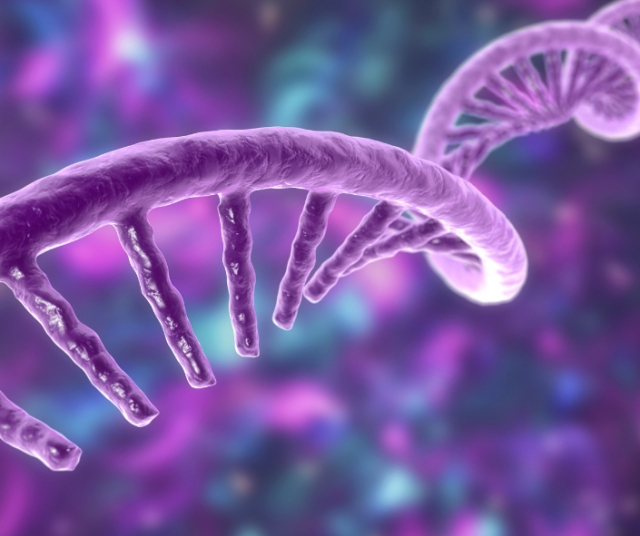The International Day for Biological Diversity, celebrated every May 22, is a crucial occasion to reflect on the extraordinary variety of life forms that share our planet. This date commemorates the adoption of the Convention on Biological Diversity in 1992, an international milestone that recognized the critical need to conserve biological diversity and promote a sustainable balance between human activities and the Earth's natural wealth.
Defining Biological Diversity: Beyond Species Variety
Biological diversity goes beyond the mere number of species in an ecosystem. It encompasses the genetic variability within each species, the diversity of ecosystems and the variety of functions that these species and ecosystems play in the biosphere. This holistic concept highlights the intrinsic interconnectedness of all forms of life and underlines the importance of maintaining a harmonious balance to ensure the stability of our planet.
Threats to Biological Diversity: A Global Challenge
Despite growing awareness of the importance of biodiversity, we face significant challenges. Habitat loss, pollution, climate change and overexploitation of resources are just some of the threats that endanger biodiversity around the world. Understanding the magnitude of these threats is essential to effectively address them and work towards a sustainable future.
Economic Importance of Biological Diversity: Beyond the Aesthetic
Biodiversity is not only valuable from an aesthetic or scientific point of view, but also plays a crucial role in the global economy. Many communities depend directly on biodiversity for their livelihoods, whether through fishing, agriculture or tourism. Additionally, numerous pharmaceutical and biotechnology industries benefit from the genetic resources offered by biodiversity, highlighting the interdependence between ecosystem health and economic prosperity.
Conservation and Preservation: Strategies to Safeguard Biological Diversity
The conservation of biological diversity involves a multifaceted approach that encompasses the protection of critical habitats, the sustainable management of natural resources and the promotion of responsible agricultural and fishing practices. The creation and maintenance of protected areas, the reintroduction of endangered species, and public education are crucial aspects of conservation efforts.
The Role of Technology in Biodiversity Conservation
Technology plays an increasingly important role in biodiversity conservation. From satellite surveillance to monitor changes in land use patterns to assisted reproductive techniques for critically endangered species, technology offers powerful tools to understand and mitigate threats to biodiversity.
Ethical Challenges in Biodiversity Conservation: Human-Nature Coexistence
Harmonious coexistence between human society and nature is an essential goal in biodiversity conservation, but this goal faces a number of intricate and multifaceted ethical challenges. Biodiversity management involves making decisions that affect both human communities and natural ecosystems, and balancing these considerations often involves navigating complex ethical territory.
One of the main ethical challenges lies in the unequal distribution of the costs and benefits of conservation. Biodiversity-rich areas often coincide with regions inhabited by local communities, and the implementation of conservation measures can have significant consequences for their ways of life. Restrictions on access to natural resources, such as fishing or agriculture, can create tensions and economic challenges for these communities. Fairness in decision-making and fair distribution of benefits are crucial elements in addressing this ethical challenge. Additionally, conservation sometimes involves making difficult decisions about prioritizing certain species or ecosystems over others. Allocating limited resources and making decisions about which areas to conserve can create ethical dilemmas, as some species or habitats may require more urgent attention than others. The fundamental question about what value we place on different ways of life and how we justify those choices is essential in this context.
Human intervention in nature, while often necessary for conservation, also poses ethical challenges. Introducing exotic species to save an endangered species can have unforeseen consequences for local ecosystems. Furthermore, emerging technologies, such as gene editing, open ethical debates about the direct manipulation of the biological inheritance of species to improve their adaptive capacity.
Human coexistence with nature also raises fundamental ethical questions about the intrinsic relationship between human cultures and biodiversity. The loss of indigenous knowledge about sustainable resource management and adaptation to specific environments represents both a cultural and biological loss. The ethic of respecting and valuing the perspectives and practices of indigenous communities becomes an essential element of any ethical approach to conservation.
Finally, climate change, driven largely by human activities, poses one of the most pressing ethical challenges. The responsibility of current generations in disrupting climate systems and their disproportionate impacts on vulnerable communities, as well as biodiversity in general, highlights the need to address not only the immediate effects, but also the root causes of biodiversity loss. .
Conservation Success: Inspiring Stories of Species Recovery
Despite the challenges, there are inspiring stories of success in conservation. The recovery of species such as the bald eagle, giant panda, and gray whale demonstrates that, with concerted efforts and sound scientific approaches, it is possible to reverse negative trends and restore populations of endangered species.
Environmental Education: Forging a Sustainable Future
Environmental education plays an essential role in building a sustainable future. Fostering understanding of the importance of biodiversity from an early age and promoting environmentally friendly practices are crucial steps toward creating a society that values and protects the richness of life on Earth.
The conservation of biological diversity is not only a scientific and economic imperative, but also an expression of our commitment to future generations and to the extraordinary web of life that shares this beautiful planet with us. By addressing threats to biodiversity with determination and focus, we can forge a future where biodiversity flourishes and continues to amaze us with its astonishing variety and complexity.
